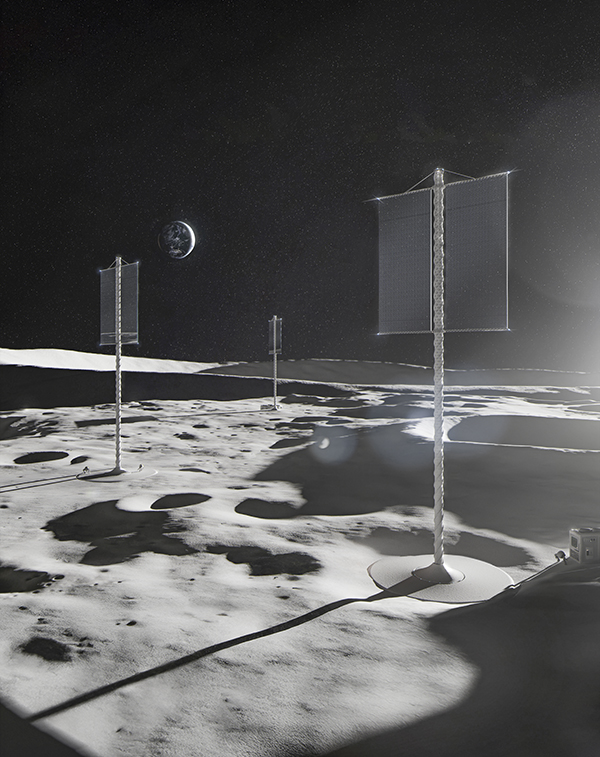Powering the Moon: The Lunar South Pole Solar Tower
As humanity dreams of a permanent foothold beyond Earth, a visionary infrastructure project is lighting the way for our cosmic future.
A Vision of Lunar Energy
In the quest to establish sustainable outposts on other worlds, power generation stands as a formidable challenge. A bold new project from Foster + Partners, in collaboration with Branch Technology, offers a solution tailored to the Moon’s rugged terrain. Their 50-meter-tall solar energy tower, designed for the Lunar South Pole, is a pioneering step toward the infrastructure needed for long-term lunar exploration and habitation. Supported by NASA’s Small Business Innovation Research (SBIR) Phase I program, this tower could redefine how we harness energy in space.
“The Lunar South Pole is a solar goldmine,” says Elena Martinez, lead designer at Foster + Partners. “Its elevated regions bask in near-constant sunlight during the lunar day—about 14 Earth days long. A vertical tower can capture this energy efficiently, without the complex tracking systems other sites might demand.”

Building for the Lunar Frontier
Crafting a structure for the Moon pushes engineering to its limits. The tower must endure temperature swings exceeding 300 degrees Celsius (540 degrees Fahrenheit) between the scorching lunar day and frigid night, all while remaining light enough for launch from Earth and robust enough to hold solar arrays in the Moon’s one-sixth gravity.
Branch Technology’s expertise in 3D printing and advanced materials is key. The team is exploring ways to use lunar regolith—the Moon’s loose, dusty soil—as a construction resource. This approach could slash the amount of material hauled from Earth, a critical factor when every gram counts in spaceflight.
“We’re designing architecture for an alien world,” explains David Kim, a spokesperson for Branch Technology. “Our parametric design approach—using algorithms to optimize strength with minimal mass—lets us create a tower that’s both featherlight and rock-solid.”
From Earth to the Stars
A scale model of this lunar marvel is on display at Foster + Partners’ From Earth to Space and Back exhibition, running at the Kennedy Center until April 13, 2025. Alongside the tower, visitors can explore other space habitation concepts through 3D-printed models, immersive films, and interactive displays. The exhibition invites us to imagine a future where humanity thrives on the Moon, Mars, and beyond—a future where space innovations ripple back to Earth.
“What we learn from these extreme environments shapes how we solve problems here,” says Sarah Patel, a Foster + Partners representative. “Efficient solar designs, novel building techniques, and self-sustaining systems could soon transform Earth’s cities into greener, smarter places.”
Powering the Lunar Dream
The solar tower is still in its design phase, a single piece of a larger puzzle. A sustainable lunar presence will demand a network of systems—power, communication, habitats, and resource management—working in harmony. As NASA’s Artemis program gears up to return humans to the Moon, projects like this highlight the ingenuity needed to turn brief visits into lasting settlements.
The lunar future may evolve beyond today’s blueprints, but the core questions endure: How do we harness energy, erect shelters, and sustain life in a realm so unlike our own? The Lunar South Pole solar tower offers one towering answer—a 50-meter-tall beacon of possibility.
Discover this and other cosmic innovations at the Kennedy Center’s From Earth to Space and Back exhibition, open through April 13, 2025. Step into the future of humanity’s multi-planetary journey.